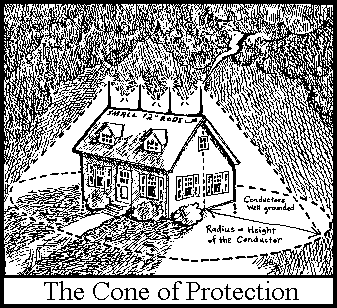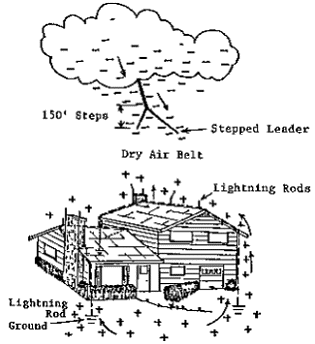How a lightning protection system works

Phase I

A lightning strike consists of opposite charges of electrical energy. A negative charge or build-up occurs in the bottom part of the cloud closest to earth and a positive charge of energy occurs directly underneath in the ground. Separating these two opposite charges is the non-conducting dry air belt separating cloud and earth. As the two opposite charges continue to build up and the dry air belt becomes moist, lightning starts down toward earth in 150 foot jagged steps or intervals. The positive ground charge is attracted upward, utilizing the lightning protection system on the building as an outlet.
Phase II

As the negative leader stroke from the cloud continues toward earth, the positive ground charge travels up through the Lightning Rod System and when the negative leader stroke is about 150 feet above the top of the protected building, the positive ground charge starts upward to meet and neutralize the downward leader stroke.
Phase III

In Figure 3, the two opposite charges are neutralized emptying the negative charges from the cloud and dissipating the ground charge. This all occurs in about one five thousandths of a second.
Phase IV

In Figure 4, the discharge has been completed and the negative cloud charge and the positive ground charge becomes zero.
Note: If the residence had not been equipped with a lightning protection system, the positive ground charge would have accumulated under or within the house. The negative cloud charge would not have been neutralized 150 feet above the residence and would have entered the building, causing possible fire, destruction, side flashes within the building or even injury or death.






